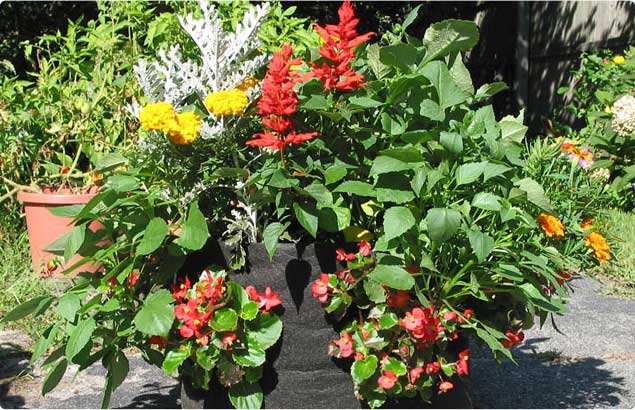Caring for Tropical Plants: Transitioning Outside for Spring
Spring Fever is in the Air
If you’re like many plant enthusiasts, you’re probably gearing up for the glorious transition to spring. And that means moving your cooped up tropical flowers back into the great outdoors. As you lay the groundwork for a magical growing season, here are four tips to help you with tropical plant maintenance.
1) Ease Into It
Ever taken a tropical vacation in the dead of winter? Spending hours on the beach under the scorching tropical sun can leave your skin toasted. Your tropical flowers aren’t all that different. After months of low-intensity indoor light, a sudden transition to full outdoor light can leave them sunburned or (gasp!) dead. So, take it slow. Place your tropical flowers outdoors for an hour or two a day, gradually extending to around-the-clock open air after 10-14 days.
2) Time It Juuust Right
For optimum tropical plant maintenance, you’ll want to imitate climate conditions in the tropics. Ideally, that means moving your tropical flowers outside when overnight temperatures are no lower than 50°F. More importantly, you should make absolutely certain you’re beyond the danger of a freeze. To check frost dates in your area, the Farmer’s Almanac is a great resource. In the early weeks of spring, keep tabs on local weather forecasts, and move tropical flowers inside if there’s danger of a frost.
3) Pick the Right Spot
While the sun can wreak havoc on your plants, the wind and rain are no less dangerous. High winds can blow your plants over, causing damage and snapping smaller stems in two. But the greatest danger wind poses is drying out your precious soil. Lack of moisture will leave your plants withered, with an uphill battle in their transition to the outdoors.
Excessive rain can also batter your plant — or drown it if your containers provide poor drainage. (Technically, oversaturated soil suffocates roots, which require pockets of air in which to breathe.) To prevent soil oversaturation, consider using fabric containers. Their porous fabric construction allows water to drain freely from the bottom of the container. And when storms or high wind are in the forecast, move your plants indoors or within a protective structure such as a porch.
4) Fertilize or repot.
Here’s a final tip on caring for tropical plants. When springtime rolls around, chances are your tropical flowers have been sitting in the same soil for at least a year. Fertilizing —or better yet, repotting! — will give your plants the nutrients they need to explode with beautiful growth. Beyond mere surface appearances, extra nutrients will give your plants the resources they need to thrive under open skies.
With some careful planning and TLC, caring for tropical plants outdoors can be a joyous and rewarding hobby. Good luck with transition your precious tropical flowers… Now bring on those sweetly scented breezes of spring!






